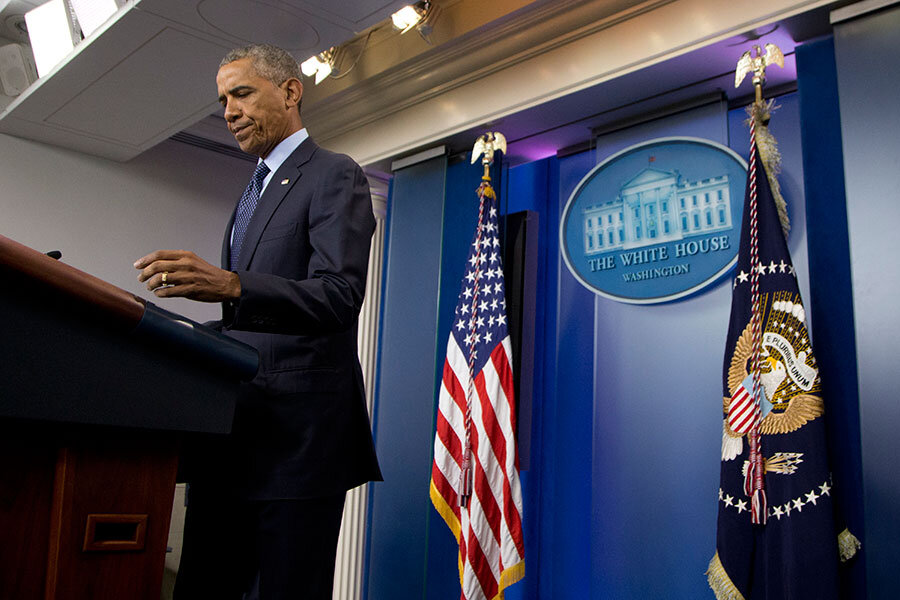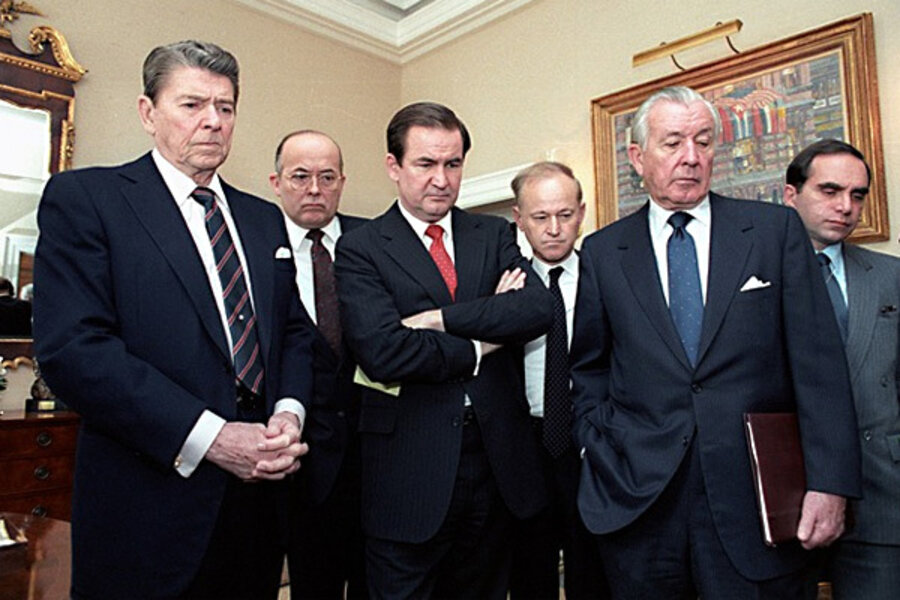Orlando and the presidential role of American-in-chief
Loading...
The tragedy of the Orlando nightclub shooting is a sobering reminder of what it means to serve as the president of the United States of America.
The person who sits in the Oval Office has many roles to play, and some of them are difficult in the extreme. The president is the nation’s legislative director, or tries to be. He or she is the chief executive of the US, entrusted with faithful execution of the law. They are commander-in-chief, the leader of our armed forces, supposed to keep us safe.
They are also head of state. Some democracies separate this emotional, symbolic role from the technocratic ones, with a president (or queen) for the former and a prime minister for the latter. But not the US. One of the most important duties of a president is to serve as a definer of national events, the mourner and interpreter-in-chief.
That is why President Obama said this Sunday: “In the coming hours and days, we’ll learn about the victims of this tragedy. Their names. Their faces. Who they were. The joy that they brought to families and to friends, and the difference that they made in this world.
“Say a prayer for them, and say a prayer for their families – that God give them the strength to bear the unbearable. And that He give us all the strength to be there for them, and the strength and courage to change,” Mr. Obama continued. “We need to demonstrate that we are defined more – as a country – by the way they lived their lives than by the hate of the man who took them from us.”
It is a role that requires action and reflection, deciding and inspiring, strength and empathy. Events, not pre-set presidential schedules, are in charge.
The personality, the nature, of presidents matter. Consider an even worse day in American history, Dec. 7, 1941.
Franklin Delano Roosevelt was eating lunch in what was then called the “Oval Study” when he learned Pearl Harbor was under attack. Aides questioned the report. FDR did not. He knew it was true.
First lady Eleanor Roosevelt passed the office a short time later and knew something huge had happened. The secretaries were all there, military aides were racing about, and all the phones were occupied. And FDR?
“He was completely calm. His reaction to any event was to be calm,” Mrs. Roosevelt recalled years later.
That night, a crowd gathered around the White House. People pressed their face through the bars of the fence and sang “God Bless America,” wrote Monitor correspondent Richard Strout, who was there.
The next day, FDR gave his famous “day of infamy” address to the nation, declaring war on Japan.
“With confidence in our armed forces, with the unbounding determination of our people, we will gain the inevitable triumph – so help us God,” he said.
And we did.
Almost 40 years later, President Reagan had to respond to another sudden disaster. On Jan. 28, 1986 he was in the Oval Office preparing for a meeting with network news anchors. Then Vice President George H.W. Bush strode in with terrible news: the space shuttle Challenger had exploded.
Reagan and aides crowded into an adjoining study to watch reports. An iconic photo shows them looking down at a screen in various states of shock. Reagan appears composed, jaw set, hands together, as if he is preparing himself for a task to come.
That night, Reagan addressed the nation. It was a brief speech, written by Peggy Noonan, that was a model of empathy and emotion.
“We mourn their loss as a nation together,” Reagan said of the Challenger astronauts, including teacher Christa McAuliffe.
He acknowledged the grief of the families. For children, he emphasized that pain and loss can be part of exploration.
“The future doesn’t belong to the fainthearted; it belongs to the brave,” Reagan said.
In November, US voters will pick someone new to fill a president’s many roles. He or she will undoubtedly try to protect Americans as much as possible.
But it is inevitable. At some point they, too, will face a national experience that requires their response. They, too, will have to stand in front of the cameras, and try for a moment to symbolize and comfort the nation.
All of us.










